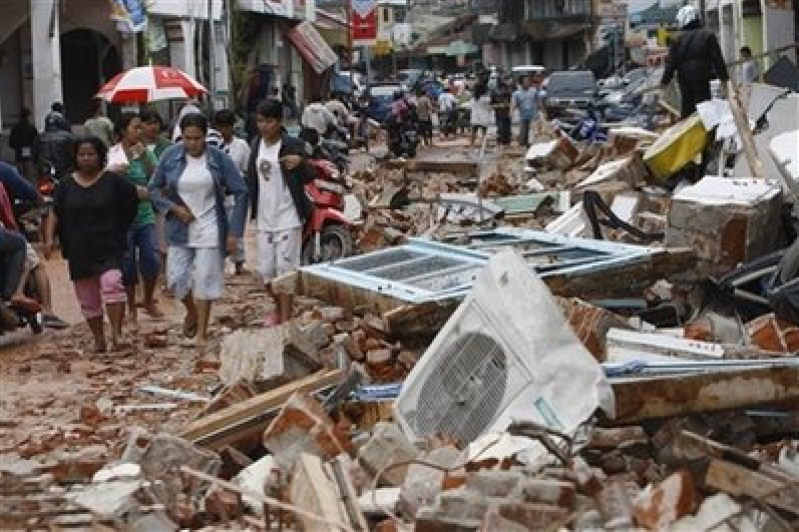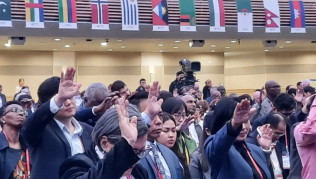
A powerful earthquake rocked western Indonesia Wednesday, killing more than 500 people and exasperating international relief groups that have been juggling between two other disasters that struck in the past week.
The U.S. Geological Survey said the latest quake had a magnitude of 7.6 and hit about 150 miles (240 kilometers) south of Padang, a coastal city of 900,000 and capital of West Sumatra province.
A total of 529 people were confirmed dead and 440 were seriously injured, the Social Affairs Ministry's crisis center reported. It said 376 deaths occurred in Padang. The rest were in four surrounding districts.
"We are going to be attempting to fly out an assessment team tomorrow morning,” reported Jimmy Nadapdap, Humanitarian and Emergency Affairs director for World Vision Indonesia, on Wednesday shortly after the quake struck around 5:15 p.m. “It is critical that we get people into the quake zone as soon as possible to find out what has happened. If buildings have collapsed then people are likely to be in urgent need of food, water and especially shelter. The injured will also need medical assistance."
Nadapdap said what typically happens after such a quake hits is that people become terrified to go back into their homes, especially if damaged, as there will be numerous aftershocks.
“Securing alternative shelter will be critical," he added.
Indonesia, a predominantly Muslim nation comprised of more than 17,000 islands, sits on a major geological fault zone and is frequently hit by earthquakes. Less than a month earlier, a 7.3 magnitude earthquake struck Indonesia’s West Java province killing some 100 people.
According to a report last week by Church World Service, tens of thousands of people are still displaced from the Sept. 2 quake and the situation for those left homeless is expected to worsen unless humanitarian assistance step up.
“While people are returning to their destroyed homes and are starting to clear the rubble and to rebuild, they are in urgent need for temporary shelter," reported Dino Satria, CWS program manager in the area, just last Thursday. "The promised government reconstruction funds have yet to be disbursed and it is unclear when disbursements will start."
International relief groups such as World Vision and Catholic Relief Services, meanwhile, have had their hands full with this past week’s disasters, including quake-triggered tsunami that hit American Samoa, Samoa and Tonga on Tuesday; and Typhoon Ketsana, which flooded more than 80 percent of the Philippines’ capital city of Manila Saturday and severely damaged more than 150,000 homes in Vietnam’s Quang Nam province two days later.
"We have mobilized, and with our Caritas Catholic Church partners, we are providing emergency assistance to the families affected by these disasters," reported CRS President Ken Hackett on Wednesday. "These are our brothers and sisters who are in dire need. Our prayers are with them and we will do all we can to help.
While the immediate focus is on rescue efforts and emergency relief, CRS and other international relief groups are already planning for the long-term reconstruction vital to recovery efforts.
Each group is also seeking help from the international community in the form of donations.
For Manila alone, World Vision is globally attempting to raise $2 million to enable a comprehensive response.
"The scale of the devastation is stretching all of us,” stated World Vision Philippines advocacy director Minnie Portales.
“The important thing is to show people that they are not forgotten by getting even small amounts of aid out,” she added.







